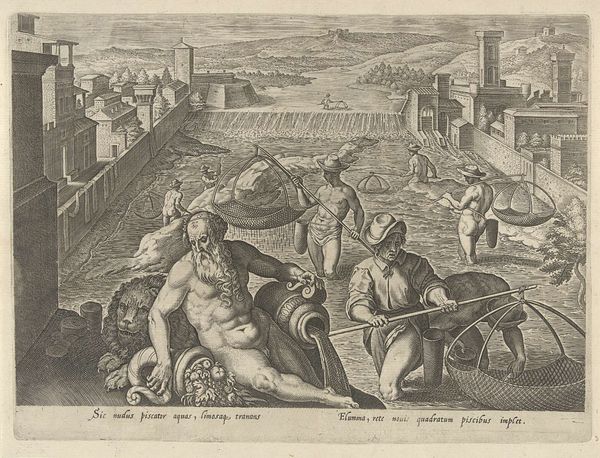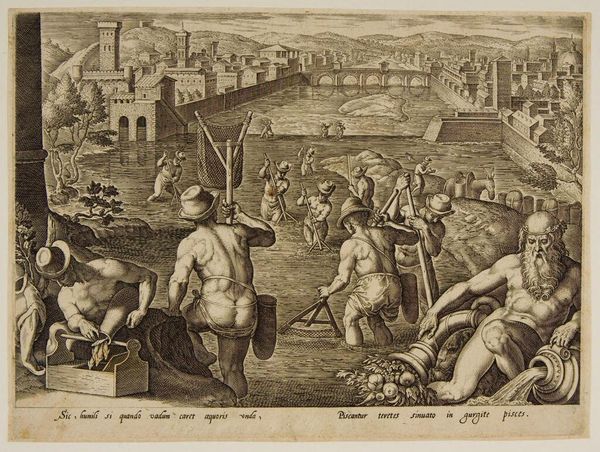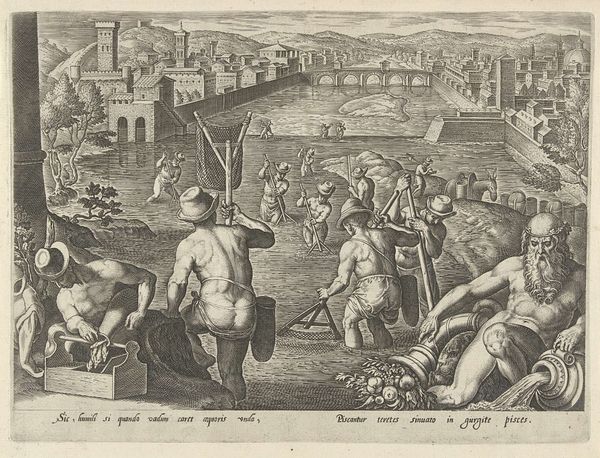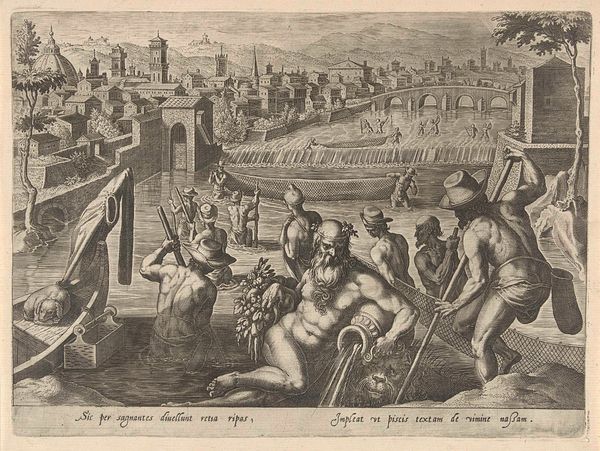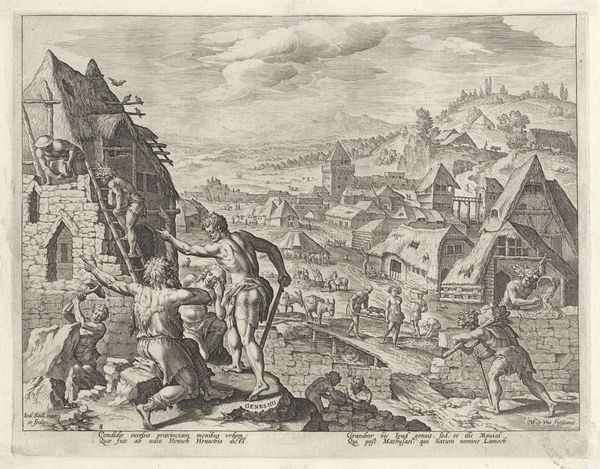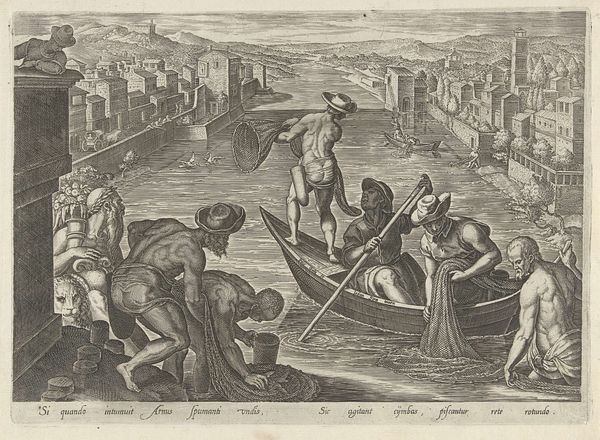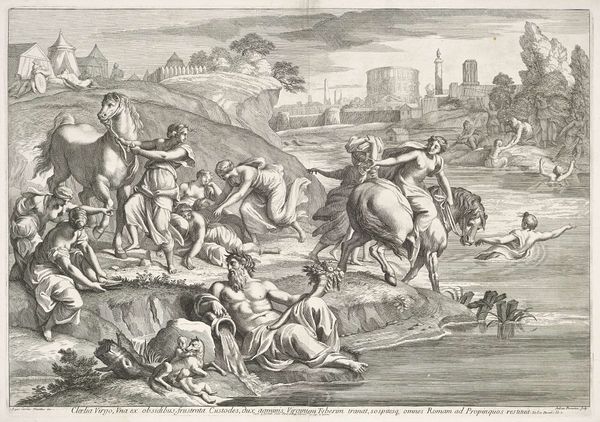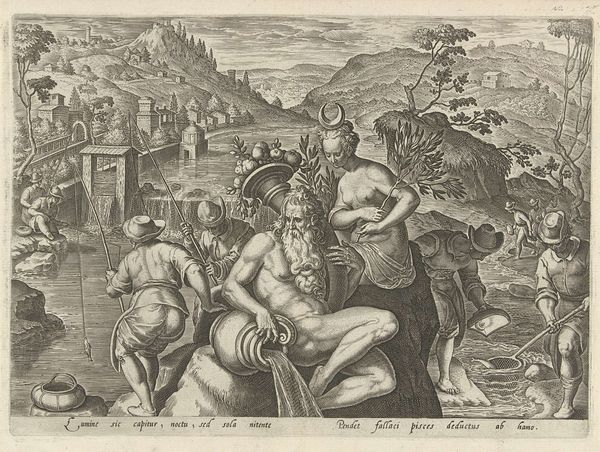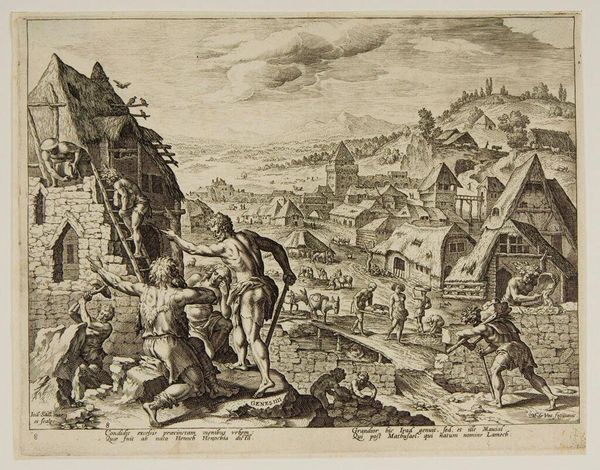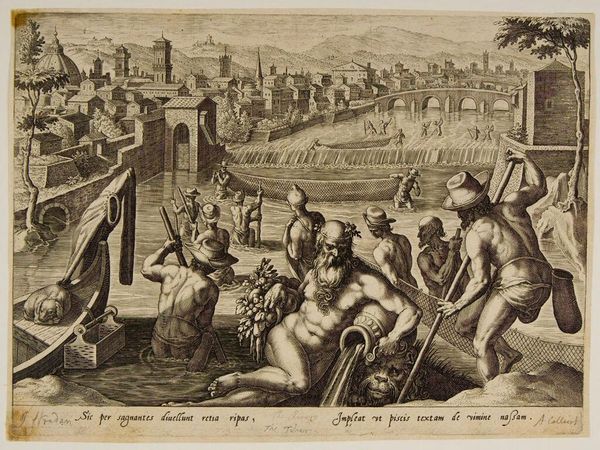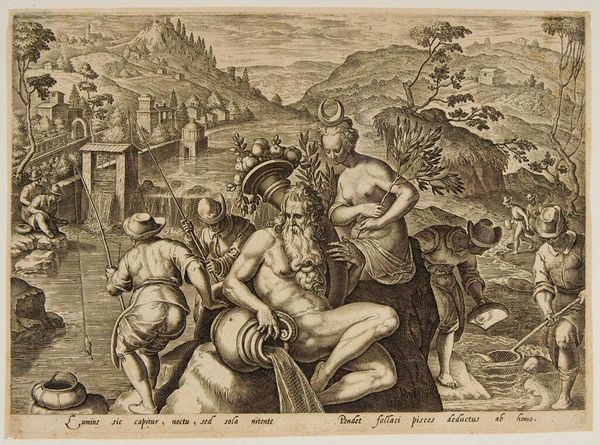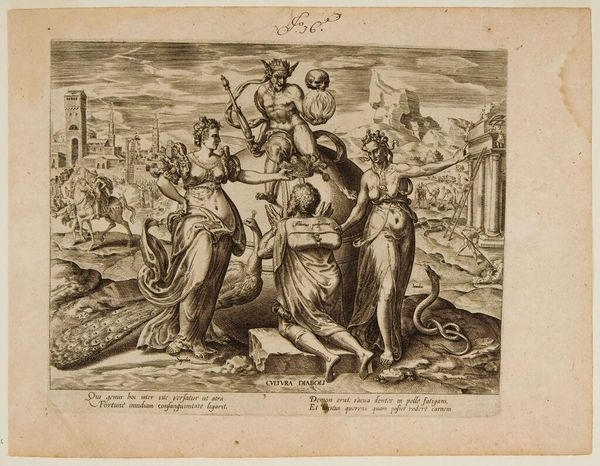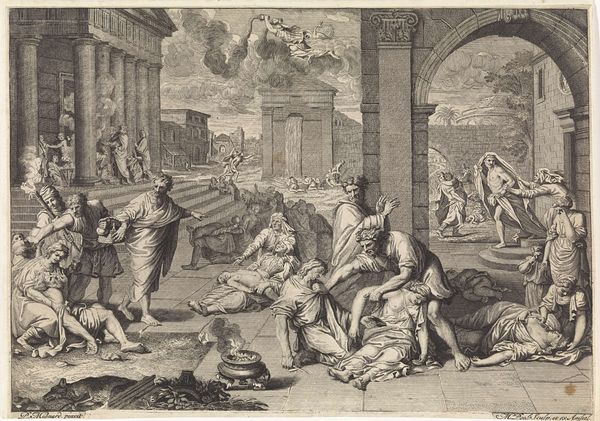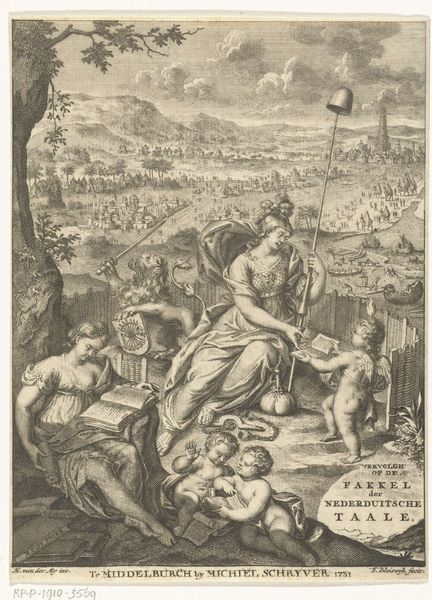
Dimensions: plate: 21.4 Ã 29.3 cm (8 7/16 Ã 11 9/16 in.)
Copyright: CC0 1.0
Curator: Adriaen Collaert's engraving, "Fishing in a Stream," presents a bustling river scene, rendered in meticulous detail. There's a real sense of depth, but also a rigid flatness that's quite compelling. Editor: The materiality of this print, the copperplate, and the labor involved in its creation, speak volumes about the dissemination of knowledge and social hierarchies of the time. The act of repeated printmaking to create accessible images is fascinating. Curator: Absolutely. Consider how the architecture and the figures within this artificial waterway interact. This isn’t just about fishing; it reflects a controlled environment shaped by human intervention and the institutional power that entails. Editor: The various tools and methods used to catch fish reflect ingenuity and resourcefulness, while the very controlled waterscape implies the social and economic exploitation of the natural environment. How did fishing come to be such a productive system? Curator: These kinds of prints circulated widely, shaping ideas about landscape, labor, and leisure. The river god and other figures contribute to a discourse on human mastery over nature, a prevailing theme of the time. It makes you wonder about the intended audience and the messages they took away. Editor: Indeed. Examining the relationship between art, labor, and the consumption of natural resources provides deeper insight into the complex social and political structures that shaped early modern Europe.
Comments
No comments
Be the first to comment and join the conversation on the ultimate creative platform.
